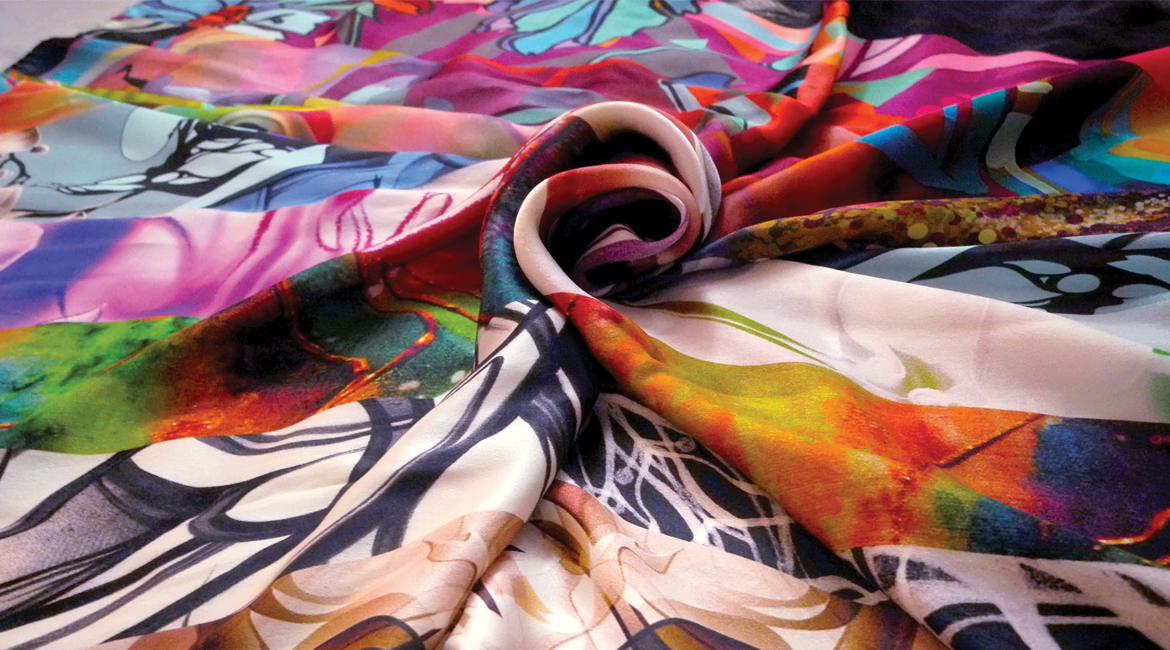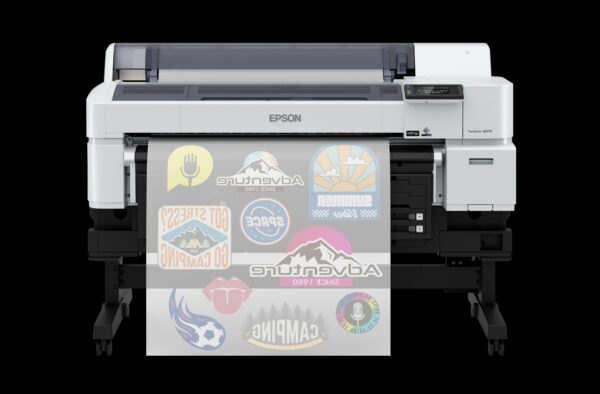The market is poised to grow, driven by a handful of manufacturers.
Textile printing is an untapped opportunity for office technology dealers and one with a promising future. Konica Minolta reinforced this vision at the PRINTING United Expo in Las Vegas this September by showcasing its commitment to the segment on the show floor and during a press conference. The presence of four Japanese executives, two of whom specialize in textile printing, reinforced the company’s enthusiasm for this emerging market. Typically, you don’t see more than one or two Japanese executives at these events.
Konica Minolta’s president of industrial production printing, Frank Mallozzi, led the press conference, sharing his insights into the role textile printing can play in expanding print opportunities. He was joined by Toshitaka Uemura, corporate senior vice president and division president of Professional Print Business, who outlined Konica Minolta’s ongoing transformation from a traditional hardware manufacturer into a digital organization serving commercial and industrial printing markets.
When asked about Konica Minolta’s plans to introduce textile printers to the U.S. market, Mallozzi wasn’t ready to reveal a timeline. However, after the press conference, a Japanese executive told me that he agreed with me that textile printing represents an extremely exciting opportunity for the world of print.
Before joining Konica Minolta, Mallozzi was VP of worldwide sales at EFI where he championed the integration of VUTEk’s super-wide format printers into EFI’s portfolio. Before the VUTEk acquisition in 2005, EFI was strictly a software company and the world’s leader in digital imaging and print management solutions for commercial and enterprise printing. It was one of the few times a software developer acquired a hardware company, making them both more successful.
Educating the Channel
While Mallozzi was at EFI, we collaborated with him to inform the office technology dealer channel about production and industrial print opportunities. I’m incredibly grateful for this education, as Mallozzi repeatedly pointed out why industrial print should be attractive to dealers. He knew we had a voice in the dealer channel, and he was thinking about how that distribution network could play a significant role for EFI. Mallozzi recognized what an important opportunity production and industrial print represented and learned quickly that EFI had to sell direct to get to where it wanted to go. He traveled the globe and sold more than 500 VUTEk models per year. He also oversaw global sales when EFI acquired Reggiani and Matan (textile manufacturers) in 2015. This experience has uniquely positioned Mallozzi to advocate for textile printing’s potential in the U.S.
In 2007, Mallozzi invited us to attend the EFI Connect Conference, and we didn’t miss one until 2022. His efforts bridged the gap between EFI’s software and hardware offerings, cementing EFI’s global success.
In 2018, while still with EFI, Mallozzi encouraged Carol, CJ, and me to travel to Barcelona to attend the ITMA (International Textile Machinery Association) exhibition, a trade show focused on textile printing. No one was more surprised than I when while walking the floor of this impressive exhibition we stumbled on a Konica Minolta booth with an extensive line of textile printers.
Konica Minolta Enters the Textile Printing Business
It was a revelation to learn that on October 14, 2014, Konica Minolta, Inc., agreed to acquire Verga IT S.r.l., an Italian inkjet textile printer sales company based in Bregnano, Como, Italy, long renowned as the center of high-grade apparel manufacturing in Italy. This was Konica Minolta’s first overseas sales subsidiary for the industrial inkjet business. It was aimed at the inkjet textile printer markets in Europe, a market Konica Minolta believed then, and still does today, to have significant growth opportunities.
Fueling Konica Minolta’s excitement for the textile printing market in 2014 was the conversion from analog to digital. At the time of the Verga acquisition, 95% of all textile printers were analog. Konica Minolta had every reason to be excited about the possibilities for this segment of the inkjet print market as it evolved to digital. Adding to the excitement was the way digital textile printing responded to the apparel industry’s market requirements, including the printing of highly detailed and precise designs that were difficult to produce through traditional analog printing.
The proverbial icing on the cake was the excellent quality digital provided when producing small quantities of assorted designs. In addition, as inkjet textile printing uses significantly less water than analog printing, more factories became interested in adopting digital technology to transform themselves into more environmentally friendly businesses.
Konica Minolta also launched an office for industrial inkjet business in Shanghai, China, in the summer of 2014. If not for the COVID-19 pandemic, Konica Minolta would have introduced its textile printer in the U.S. in 2021-2022.
Challenges and Opportunities in the U.S.
The U.S. once had a thriving textile printing industry, but it faltered due to competition from countries like China and Italy, with their significantly lower production costs. Tariffs designed to protect U.S. manufacturing backfired, as retaliatory measures stifled American exports in other sectors. Aside from Italy, China and India are responsible for as much as 40% to 45% of the current textile printing market. Today, rebuilding this industry in the U.S. will require significant investment and reliance on direct sales to launch an aggressive textile printing marketing campaign.
What does this all add up to? Konica Minolta, Ricoh, and Epson, which all produce textile printers, will lead the way for the U.S. to enter the textile printing market in 2027-2028. All three have U.S. distribution organizations that sell through dealers.
Reestablishing textile printing in the U.S. represents a chance to rebuild an industry lost in the 20th century. This market will not only diversify the old copier world but also open the door of opportunity for a sustainable business model well into the future.
A recent report, “Digital Textile Printing Inks Market by Ink Type, Application – Global Forecast 2025-2030” from ResearchandMarkets.com fuels our enthusiasm for this sector. The report revealed that the digital textile printing ink market grew from $1.26 billion in 2023 to $1.38 billion in 2024. It’s expected to grow at a CAGR of 9.56%, reaching $2.39 billion by 2030. These figures fuel optimism that textile printing could become a sustainable and profitable segment of U.S. printing and an opportunity to rebuild an industry in our country that was lost at the end of the 20th century.





